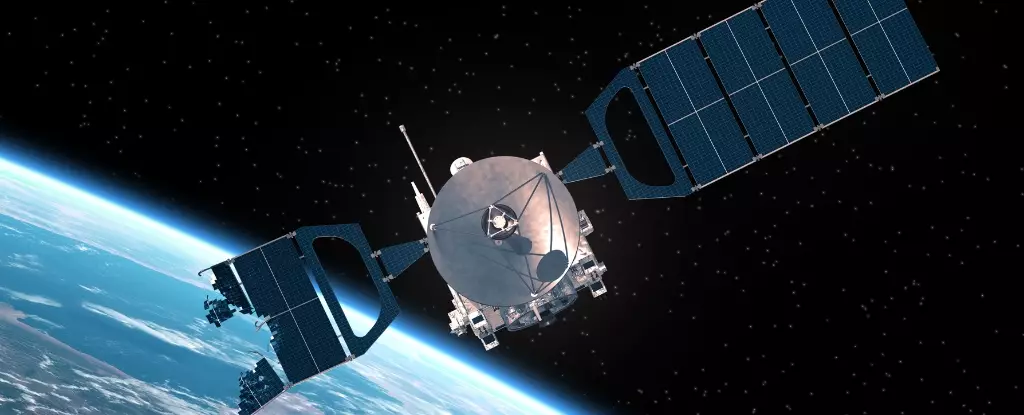In the cosmic arena, where the vastness of space intertwines with humanity’s burgeoning curiosity, the asteroid dubbed 2024 YR4 has emerged as a prominent character in a potentially cataclysmic narrative. This 60-meter-wide rock represents not only a significant threat but also an opportunity for scientific investigation that could redefine our understanding of planetary defense. The looming impact of this celestial body—now assessed with a 4.3 percent chance of striking the Moon—has raised questions about the implications of such a collision for life on Earth.
Asteroids, by their very nature, are remnants from the formation of the solar system, offering a window into the past. However, their unpredictability makes them formidable players in contemporary astronomical studies. The initial fear of an Earth-bound trajectory has subsided, but the potential lunar collision raises new concerns. Researchers from the University of Western Ontario indicate that should 2024 YR4 collide with the Moon, it could unleash debris that threatens communication satellites critical to our interconnected world.
The Moon: A Cosmic Playground for Risks and Rewards
If the asteroid were to strike the Moon, as modeled in simulations conducted by researchers, the aftermath could be extraordinary. An energetic explosion comparable to that of a large nuclear detonation could eject more than 100 million kilograms of debris into space. If this impact were to occur on the Moon’s Earth-facing side—a scenario with roughly a 50 percent chance—up to 10 percent of that material could enter Earth’s gravitational pull. This scenario brings with it the exhilarating promise of a stunning meteor shower visible to millions on the ground but also poses serious risks to the satellites orbiting our planet.
As Paul Wiegert, the study’s lead author, emphasizes, even small-sized meteors can carry immense kinetic energy—like bullets racing towards their targets. With predictions estimating more than a thousand times the usual influx of meteors post-impact, the potential for disruption to satellite operations is alarming. It draws attention to a crucial aspect of human reliance on technology; even the slightest alteration in our orbital infrastructure could have cascading effects on global communication, navigation, and various sectors reliant on satellite functions.
A Call for Preparedness and Scientific Innovation
Though the current probability of a direct impact on the near side of the Moon remains low, the implications of a collision invoke a call to action for scientists and policymakers alike. Should the trajectory of 2024 YR4 begin to change, humanity would likely have a window of opportunity to devise a plan for a possible deflection mission. The mission could serve not only as a protective measure for the Moon but also as a practical test of our ability to divert dangerous asteroids—a frontline defense in our ongoing battle against cosmic threats.
The potential for scientific inquiry amidst a threatening scenario is exhilarating. With a size a fraction of that of Dimorphos, the asteroid targeted by NASA’s DART mission, 2024 YR4 presents a relatively manageable challenge. If approached with innovative strategy and collaborative effort, this encounter could bring about advancements in planetary defense technologies. Moreover, the confidence gained from successfully redirecting even a smaller asteroid could bolster plans for addressing more formidable threats in the future.
The Cosmic Light Show: Balancing Spectacle with Caution
The notion of witnessing a spectacular meteor shower as a result of a lunar collision invariably adds layers of complexity to the dialogue surrounding Earth’s planetary defense. While some may gaze at the night sky with awe, captivated by the beauty of cosmic fireworks, those in the know will have their hearts racing at the underlying dangers presented by the impending debris.
The duality of this situation serves as a poignant reminder of the unpredictable nature of our universe. While one can appreciate the artistic chaos of meteors streaking through the heavens, there must be equal diligence in addressing their potential fallout. It is crucial that discussions around asteroid impact preparedness—particularly concerning communication and satellite technology—continue to evolve, leveraging every fragment of data we glean from our cosmic engagements.
Anticipation for our future with asteroid 2024 YR4 grows as we await renewed observations in 2028. Until then, the cosmic dance of destiny offers a compelling narrative of threat, wonder, and boundless opportunity, urging humanity to embrace its pioneering spirit while remaining vigilant against the perils that loom within our starry domain.

